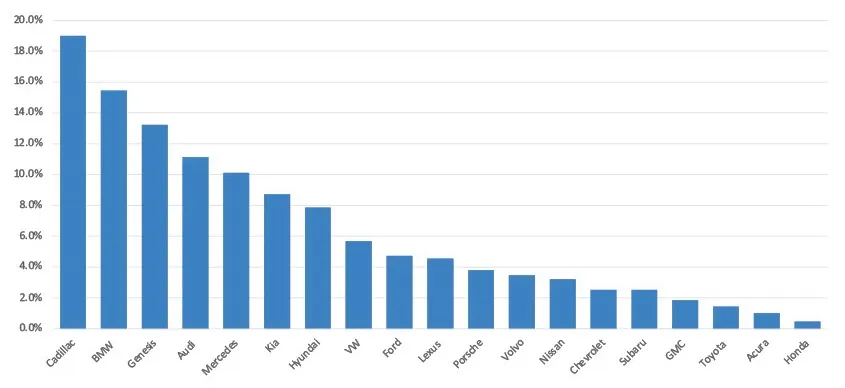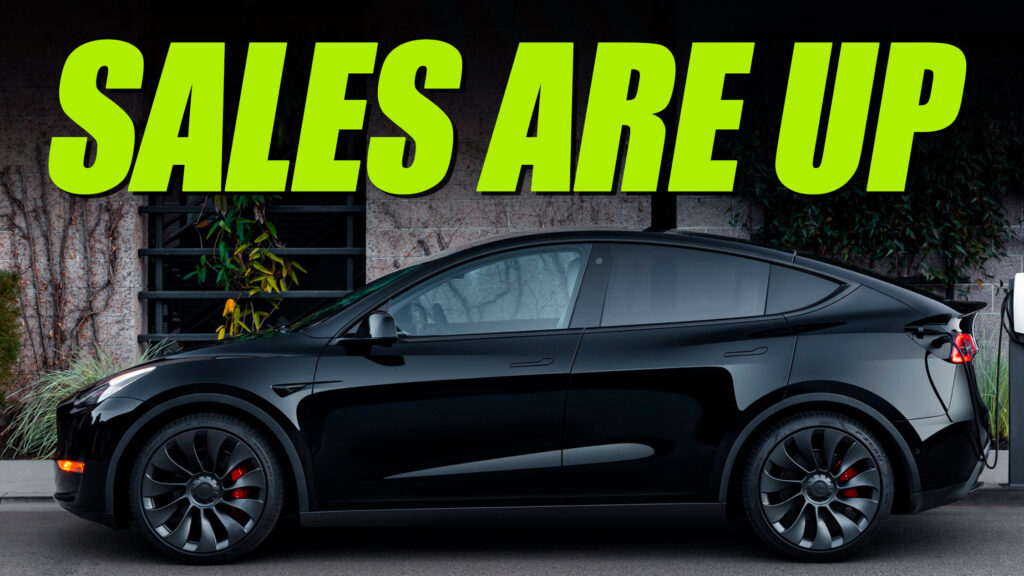- Approximately 11.3% more EVs were sold in the U.S. in Q2 than in the same period last year.
- Tesla’s market share slipped below 50% for the first time.
- EVs accounted for roughly 19% of Cadillac’s total sales.
A lot of doom and gloom has been painted around the state of the EV market, including in the United States. However, a look at sales figures through the second quarter reveals that demand for EVs continues to rise, and they now account for 8% of new vehicle sales across the country.
During Q2, 330,463 EVs were sold in the U.S. representing an 11.3% year-over-year increase and an impressive 23% increase from Q1. This meant the proportion of new vehicles sold in the U.S. that are EVs rose from 7.1% in Q1 to 8% in Q2, and up from 7.2% in Q2 of 2023.
Read: EV Sales Crash 16.4% In Germany, But That’s Nothing Compared To Tesla’s Losses In First Half
Cox Automotive notes the sales growth can be attributed to improved availability, higher discounts, and elevated leasing levels. The growth also came despite Tesla’s share of total EV sales slipping below the 50% mark in the U.S. for the first time, dropping to 49.7%.
Tesla wasn’t the only manufacturer to see its EV sales slip in the second quarter. EV sales from Mercedes-Benz, Polestar, Porsche, Volvo, VW, and Chevrolet saw dips, with the latter experiencing a 19% decrease in sales year over year. Several new entries to the market played a role in an overall increase, including the arrival of the BMW i5, Cadillac Lyriq, Honda Prologue, and Kia EV9.

Surprisingly, the brand with the second highest proportion of total EV sales in the U.S. was Cadillac, with roughly 19% of its vehicles sold being EVs. It was followed by BMW with ~15%, Genesis with ~13%, and Audi with ~11%. Other brands in the top 10 include Kia, Hyundai, VW, Ford, and Lexus.
“EV sales exceeded expectations during a record-breaking quarter,” Cox Automotive’s Stephanie Valdez Streaty said. “Despite Tesla’s declining sales, with its EV sales share now below 50% for the first time, the overall competitive landscape for electric vehicles is intensifying. This increased competition is leading to continued price pressure, gradually boosting EV adoption. Automakers that deliver the right product at the right price and offer an excellent consumer experience will lead the way in EV adoption.”



